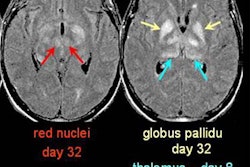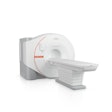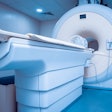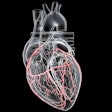Recent MRI studies have shown differences between people with attention deficit/hyperactivity disorder (ADHD) and control subjects. What the differences mean, however, remains an unanswered question.
In a study presented at the American Academy of Child and Adolescent Psychiatry (AACAP) this fall in San Francisco, Sigi Hale found that functional MRI (fMRI) studies showed a statistically significant difference between adults with ADHD and controls. Hale, a medical student at the University of California, Los Angeles (UCLA), collaborated in her research with Dr. James McGough, associate professor of clinical psychiatry at UCLA Neuropsychiatric Institute.
Noting that few studies have examined the nature of hemispheric specialization and interaction in people with ADHD, and some reports had inadvertently shown abnormal left/right brain dynamics in such patients, the researchers sought to directly assess hemispheric relations in adults with ADHD.
They recruited 22 patients and 22 controls, who performed a lateralized lexical decision task designed to address hemispheric differences in word recognition. Subjects fixated centrally and decided whether strings of letters flashed at a rate of 150 milliseconds in the right or left visual field were either words or nonwords, and responded by pressing a button. The investigators then modified the task so that they could investigate with fMRI how a similarity between words or nonwords affected brain activation.
"Subjects with ADHD are severely impaired at identifying words in the left visual field," Hale said, noting that the significance was 0.002. "The imaging results suggest that ADHD subjects are not activating brain systems related to normal interhemispheric priming, and that ADHD may be linked to abnormal interhemispheric communication."
"At this point in time, these studies are of interest to research only," McGough said, cautioning that radiologists watch this type of neuroimaging research progress before trying to determine its clinical significance. "This may change in the future, but at the present time there is no current indication for neuroimaging in the clinical diagnosis or management of ADHD."
Dr. William Bradley supported this cautious approach to the relationship between neuroimaging findings and ADHD. "I'm not surprised that people with ADHD cannot recognize words and nonwords," said Bradley, chair of the radiology department at the University of California, San Diego, and the chair of the American College of Radiology’s commission on neuroradiology and MRI. "I’m not sure at this point what this finding adds."
By Paula Moyer
AuntMinnie.com contributing writer
December 9, 2002
Related Reading
Adults with ADHD exhibit brain abnormalities on functional MRI, October 28, 2002
Brain volume in ADHD reduced but growth remains normal, October 9, 2002
Functional MRI may identify ADHD patients likely to benefit from methylphenidate, August 6, 2002
Copyright © 2002 AuntMinnie.com



.fFmgij6Hin.png?auto=compress%2Cformat&fit=crop&h=100&q=70&w=100)




.fFmgij6Hin.png?auto=compress%2Cformat&fit=crop&h=167&q=70&w=250)











